The Shared Uses of Calabash in Indigenous Communities
If you grew up in a village with a calabash tree, you probably know those hard-shelled gourds aren’t just pretty, they’re practical. For generations, this versatile fruit has been turned into food containers, musical instruments, even sacred ceremonial objects. And while modern utensils have taken over in many homes, calabash still holds a special place in indigenous communities for its usefulness and its spiritual meaning. In tonight’s Kolcha Tuesday, we take a closer look at why this humble fruit remains a cultural treasure. Here’s News Five’s Britney Gordon with the story.
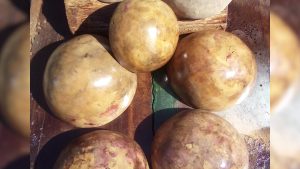 Britney Gordon, Reporting
Britney Gordon, Reporting
That sound you’re hearing? It’s seeds rattling inside a calabash shell, turned into a maraca used in Garifuna spiritual ceremonies. But that’s just one of the many ways this humble fruit has been transformed for centuries. From natural plates and bowls to musical instruments, the calabash has been a staple in indigenous life. Garifuna historian Sebastian Cayetano shares how this versatile gourd continues to play an important role in his community.
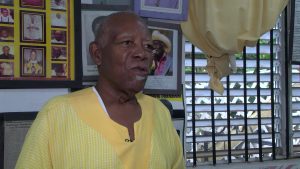
Sebastian Cayetano
Sebastian Cayetano, Garifuna Historian
“This will be used as a dipper or even to serve food to the ancestors, but these are the regular small ones. To dip water or serve food as well. Then we have this particular one. This is for the ancestors. That’s why it painted red. And this one, I was so fortunate to have made a visit in Nicaragua in 2013. And this was a gift given to us. It has decorations ornaments on it.”
The calabash fruit can be used as various kitchenware items across cultures. In Mayan communities, calabash is often used to serve caldo and to sip the traditional cacao drink.
 On the Phone: Estevan Peck, Mayan Community Member
On the Phone: Estevan Peck, Mayan Community Member
“These are what our ancestors used because at the time, way back, we do not have what we currently have in modern time, but rather. They would use the fruit of this tree, the calabash tree, and just once it is ripe, they would sun it up take out all the seeds that are from it and create a utensil a dish or a cup.”
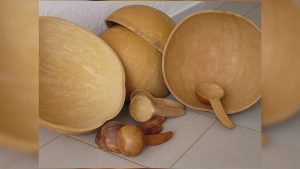 The calabash isn’t reserved for just everyday use. It is also a valuable tool in spiritual ceremonies. Garifuna spiritual leaders, called Buyae, use calabash maracas when presiding over ceremonies. Similarly, calabash instruments are utilized in Mayan rituals.
The calabash isn’t reserved for just everyday use. It is also a valuable tool in spiritual ceremonies. Garifuna spiritual leaders, called Buyae, use calabash maracas when presiding over ceremonies. Similarly, calabash instruments are utilized in Mayan rituals.
On the Phone: Estevan Peck
“We have what we call the Moro Dance. And other different dances. Even up to the Deer Dance, if we wouldn’t be able to find any other shaka you would call it, or the ones that we would purchase, we would create our own instrument, and we would use it in the dance.”
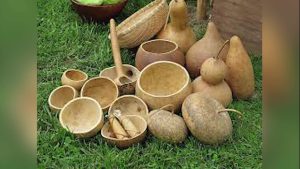 The calabash fruit holds deep cultural significance for both indigenous groups. Cayetano explains that this shared tradition has strengthened ties between the communities, as they rely on each other for its trade.
The calabash fruit holds deep cultural significance for both indigenous groups. Cayetano explains that this shared tradition has strengthened ties between the communities, as they rely on each other for its trade.
Sebastian Cayetano
“This was made by Mrs. Coy from Midway Village in Barranco. There’s a calabash tree by Dabuyaba. So we harvested the calabash as they are. And we take it to her to process. And then once it’s processed, then she gives it back to us. Process ready to use.”
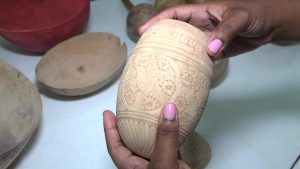 Although modern implements exist in the form of plastic or ceramic tableware, the calabash gourd is a popular choice in many households across Belize. Peck attributes this to the timelessness of traditional practices.
Although modern implements exist in the form of plastic or ceramic tableware, the calabash gourd is a popular choice in many households across Belize. Peck attributes this to the timelessness of traditional practices.
On the Phone: Estevan Peck
“I the same indigenous mentality or mindset because we come from a culture that is based on nature, whatever we can get our hands on, it’s right from the immediate surrounding that we live. And so like the girlfriend, our brothers and sisters, we do share something that what said with instrument wise, like with the drums, we too de mayers. We have that instrument integrated into our culture as well.”
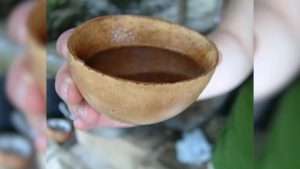 Cayetano shares this belief, saying that as long as the community keeps its traditions alive, the calabash will remain a part of daily life for generations to come.
Cayetano shares this belief, saying that as long as the community keeps its traditions alive, the calabash will remain a part of daily life for generations to come.
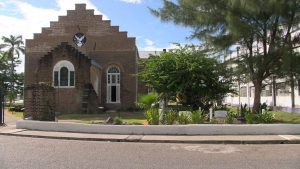 Sebastian Cayetano
Sebastian Cayetano
“In the Dabuyaba, but this is all you’ll see there. You won’t find cup, saucer, and plates. No. The Dabuyaba insists that this is what you use, so they would you. When you go to the temple, then you’ll see bags and bags of this calabash used for our spiritual purposes. Food serving. Food serving drinks. Remember, while the Maya used cacao as their sacred drink, the Garinagu will use cassava wine. We call it hui. That’s our sacred spiritual drink.”
Today, calabash trees can still be found across the country and in the heart of Belize City, near the House of Culture, one tree stands proud and strong where it has for decades, a symbol of strength and resilience in the community. Britney Gordon for News Five.




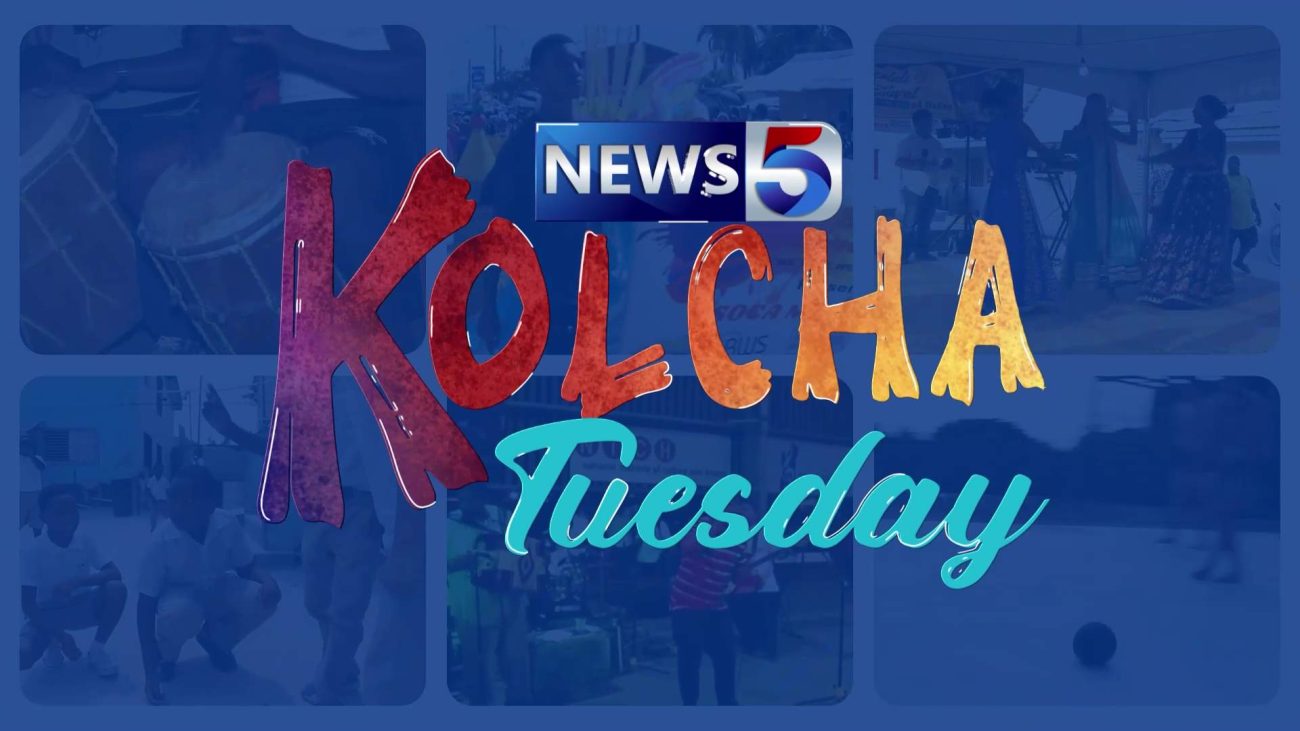

Facebook Comments